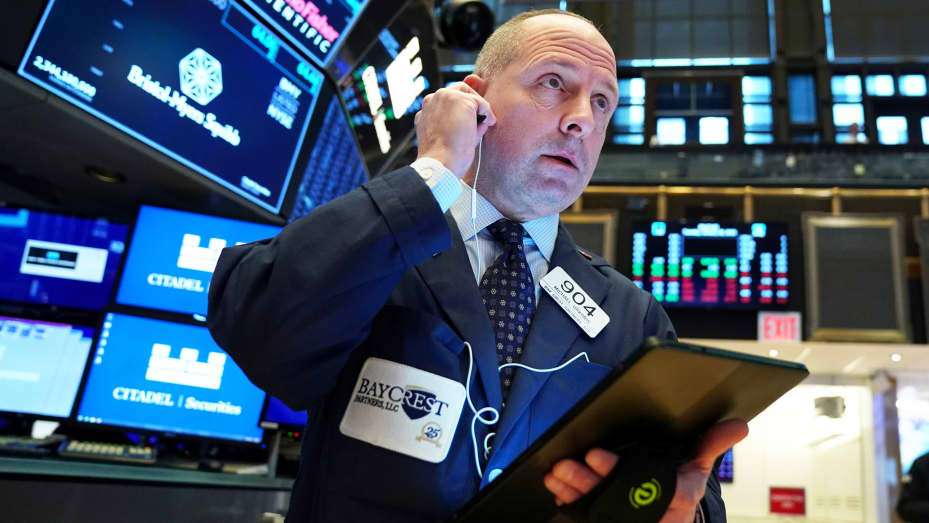The stock market has seen a surge of optimism in recent weeks, with the major indexes posting strong gains after a volatile October. The tech-heavy Nasdaq Composite registered its seventh straight day of gains on Monday, its longest winning streak since January. While this rally has lifted stocks from their October lows, questions remain over whether it can be sustained.
In Monday’s trading session, the Nasdaq rose 0.6%, the S&P 500 climbed 0.96% and the Dow Jones Industrial Average gained 0.31%. This marked the sixth consecutive positive day for both the S&P 500 and Dow. The last time the Dow saw such a streak was back in July, while the S&P 500’s run has not occurred since June.
Last week proved to be a major turning point, with stocks snapping a prolonged losing streak. The S&P 500 jumped 5.9% for its best week since June, climbing out of correction territory after dipping more than 10% from its record high in January. The Nasdaq surged 8.1% in its strongest week this year so far. The Dow also rallied 4.9%.
Driving this rebound has been cooling inflation data which boosted hopes the Federal Reserve could slow its aggressive interest rate hikes. October’s consumer price index rose 7.7% from a year ago, below expectations and marking the fourth straight month of easing price pressures. This prompted speculation the Fed could implement a smaller 50 basis point rate hike at its December meeting, rather than the jumbo 75 basis point increases it has been favoring.
The central bank’s November policy announcement offered further encouragement, as it raised rates by 75 basis points as expected but hinted it could temper the pace of hikes going forward. Fed Chair Jerome Powell stated the ultimate level of rates would likely be higher than previously anticipated, but the pace could slow soon. Treasury yields fell sharply in response, with the 10-year yield dropping below 4% after topping 4.3% in late October.
With inflation pressures easing and the Fed signaling it may be approaching the end of its hiking cycle, investors have regained their appetite for risk assets. However, analysts caution there are still significant headwinds facing markets.
“While risks remain, we believe the Fed’s commitment to disinflation creates an attractive opportunity for investors, particularly those who have maintained a defensive posture this year,” wrote Mark Haefele, chief investment officer at UBS Global Wealth Management, in a research note.
Lingering Economic Concerns
While inflation has declined lately, it remains severely elevated and the Fed is still forecast to push rates above 5% next year. Ultra-hawkish policy continues to stoke fears of an economic downturn. The latest jobs report showed the labor market remains exceptionally tight, with unemployment hitting a 50-year low. But layoff announcements have picked up in sectors like technology and finance, and companies have been cutting costs.
High rates will continue acting as a brake on the economy, slowing demand, profits and business investment. Former Treasury Secretary Larry Summers argued it’s unlikely the Fed can tame inflation without triggering a recession.
“While the Fed clearly wants to avoid recession, they want to avoid it in the same way you want to avoid the flu. They’re not going to take affirmative steps to promote recession, but they certainly seem prepared to accept recession if that’s necessary,” Summers told Bloomberg Television.
Geopolitical tensions also linger as Russia’s war in Ukraine continues. Europe faces an energy crisis heading into winter, China maintains strict zero-Covid policies that are disrupting manufacturing and supply chains, and Taiwan remains a flashpoint amid tensions between China and the U.S.
Upcoming risks include the possibility Republicans take control of one or both chambers of Congress in the midterm elections. Markets are concerned this could lead to fiscal deadlock and dysfunction. The next major test for stocks looms in December when the Fed makes its next policy decision.
Earnings Reports Provide Insight Ahead
With lingering macroeconomic uncertainties, upcoming corporate earnings reports will help provide greater clarity on the business climate. Disney, Occidental Petroleum and Wendy’s are some of the major companies releasing quarterly results this week.
Disney’s latest numbers on Tuesday should show the ongoing impact to its streaming and parks businesses from rising costs, higher rates and uneven consumer demand. Occidental Petroleum’s report Thursday will give insight into how the energy sector is faring during a turbulent year. Wendy’s results Wednesday will reflect fast food’s performance amid elevated inflation.
Most S&P 500 companies have exceeded profit expectations so far this season, though negative outlooks have grown more common. Further deterioration in guidance could undermine the fragile market rebound. On the other hand, resilient earnings and commentary could bolster stocks.
Technical Factors Come Into Play
Beyond fundamentals, technical stock market analysis will play an important role in the days ahead. The S&P 500 bounced right around its 200-week moving average last week, a key long-term support level indicating the index may have bottomed. However, it remains below its 50-day moving average after this measure definitively crossed below the 200-day in October.
“U.S. equities are trapped in a technical tug-of-war,” noted analysts at Bank of America. “Bulls can point to the potential for a positive golden cross on the S&P 500 for the first time since April 2020. Bears can highlight downside risks with the index still below its 50-day moving average.”
The Cboe Volatility Index, or VIX, has also retreated from its highs, sliding under 24 last week. Known as Wall Street’s “fear gauge,” the VIX above 30 indicates investor anxiety has eased from extreme levels as stocks rebounded. However, it remains well above its long-term average near 20, reflecting lingering unease.
Ned Davis Research also highlighted various divergences between market sectors that could leave stocks vulnerable. For example, small caps have lagged large caps, transport stocks have significantly underperformed amid recession fears, and cyclical groups trail defensive sectors.
“Intermarket, sector and industry divergences also warn that the rally remains suspect,” NDR said in a note. “The weight of the technical evidence leans bearish.”
Bullish sentiment also bounced rapidly from deep pessimism, according to the latest AAII survey, which could be a warning sign if investors become over-eager. Plus, November has historically been the second-worst month of the year for stocks, while December has been stronger ahead of the so-called Santa Claus rally. This track record suggests prudent strategy may be to wait for a better entry point next month.
Caution Still Warranted
While the recent stock rebound has been encouraging, uncertainty persists regarding how much momentum it can sustain. Inflation remains high, the Fed is still on track to drive rates well above 5%, and fears of an economic contraction linger.
“The next bull is coming, but it will require more than just the wish, belief or even reality of a first Fed rate cut,” wrote Morgan Stanley’s Lisa Shalett.
Technically, stocks still face an uphill battle to conclusively break above their 50-day moving average and establish a new uptrend. Key resistance levels overhead could act as a ceiling, especially if upcoming earnings reports and guidance prompt renewed concerns over consumer demand and corporate profits.
For these reasons, a cautious, defensive posture still appears prudent. Any further upside seems likely to face obstacles and volatility in the months ahead. While another market bottom could be forming, investors may want to wait for improved technicals, fundamentals and risk sentiment before turning decisively bullish. Patience could be wise until more confirmation emerges of durable upside momentum and a clear path forward.























